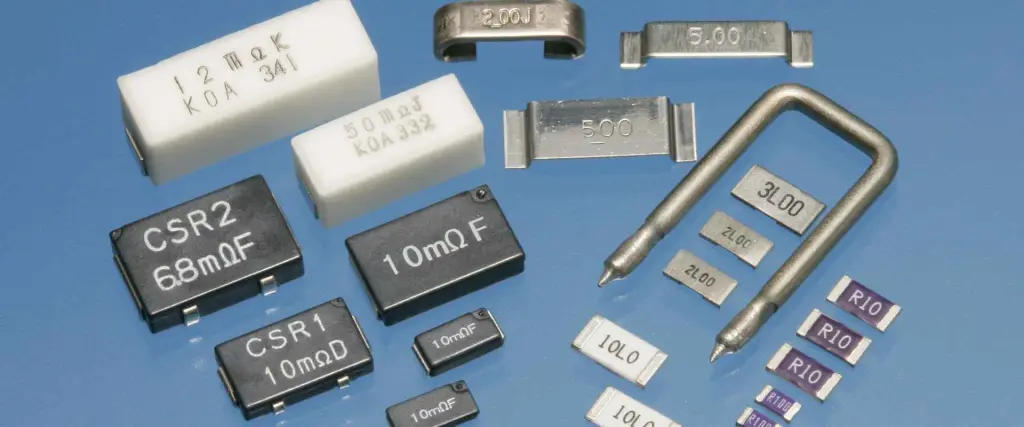In the world of electrical engineering and electronics, resistors play a crucial role in controlling the flow of electric current within circuits. While resistors may seem like simple components, they come in various types, each with unique characteristics and applications. Two fundamental categories of resistors are linear and nonlinear resistors. Understanding the differences between these two types is essential for anyone working with electronic circuits or studying electrical engineering.

Introduction to Resistors
Before delving into the specifics of linear and nonlinear resistors, let’s briefly review what a resistor is and its primary function in electrical circuits.
What is a Resistor?
A resistor is a passive two-terminal electrical component that implements electrical resistance as a circuit element. Its primary purpose is to reduce current flow, adjust signal levels, divide voltages, and terminate transmission lines, among other uses. Resistors are characterized by their resistance value, typically measured in ohms (Ω).
Linear Resistors

Linear resistors are the most common type of resistors used in electronic circuits. They are characterized by their adherence to Ohm’s Law, which establishes a linear relationship between voltage and current.
Characteristics of Linear Resistors
- Ohm’s Law Compliance: Linear resistors follow Ohm’s Law (V = IR) precisely. This means that the voltage across the resistor is directly proportional to the current flowing through it, with resistance being the constant of proportionality.
- Constant Resistance: The resistance value of a linear resistor remains constant regardless of the applied voltage or current.
- Temperature Stability: Ideal linear resistors maintain their resistance value regardless of temperature changes. However, real-world linear resistors may exhibit slight variations due to temperature coefficients.
- Symmetrical Behavior: Linear resistors behave identically regardless of the direction of current flow.
Types of Linear Resistors
There are several types of linear resistors, each with its own construction method and specific applications:
- Carbon Composition Resistors: Made from a mixture of carbon and ceramic, these resistors are inexpensive but less precise.
- Metal Film Resistors: Constructed with a thin metal film deposited on a ceramic substrate, offering better precision and stability.
- Wire Wound Resistors: Made by winding a metal wire around a ceramic core, these resistors can handle high power and offer high precision.
- Foil Resistors: Utilize metal foil on a ceramic substrate, providing exceptional precision and stability.
Applications of Linear Resistors
Linear resistors find applications in various electronic circuits and systems:
- Current limiting
- Voltage division
- Biasing in amplifier circuits
- Pull-up and pull-down in digital circuits
- Feedback networks in operational amplifiers
Nonlinear Resistors
Nonlinear resistors, as the name suggests, do not adhere to Ohm’s Law. Their resistance varies based on factors such as applied voltage, current, or temperature.
Characteristics of Nonlinear Resistors
- Non-Ohmic Behavior: The relationship between voltage and current is not linear, meaning Ohm’s Law does not apply consistently.
- Variable Resistance: The resistance of nonlinear resistors changes with variations in voltage, current, or other factors like temperature or light.
- Specialized Applications: Nonlinear resistors are often used for specific purposes such as voltage regulation, current limiting, or sensing environmental changes.
- Asymmetrical Behavior: Some nonlinear resistors may behave differently depending on the direction of current flow or polarity of applied voltage.
Types of Nonlinear Resistors
Nonlinear resistors come in various forms, each designed for specific applications:
- Varistors: Voltage-dependent resistors that protect circuits against voltage spikes.
- Thermistors: Temperature-dependent resistors used for temperature sensing and compensation.
- Light-Dependent Resistors (LDRs): Also known as photoresistors, these components change resistance based on light intensity.
- Magnetic Field Dependent Resistors: Their resistance changes in response to magnetic fields.
Applications of Nonlinear Resistors
Nonlinear resistors have specialized applications in various electronic systems:
- Voltage regulation and protection
- Temperature sensing and compensation
- Light sensing in automatic lighting systems
- Magnetic field sensing in position detectors
- Current limiting in power supplies
Comparison between Linear and Nonlinear Resistors
To better understand the differences between linear and nonlinear resistors, let’s compare their key characteristics:
| Characteristic | Linear Resistors | Nonlinear Resistors |
|---|---|---|
| Ohm’s Law | Follows | Does not follow |
| Resistance | Constant | Variable |
| V-I Curve | Straight line | Non-linear curve |
| Temperature | Minimal effect | Can be significant |
| Applications | General purpose | Specialized |
| Behavior | Predictable | Context-dependent |
| Precision | High | Varies |
| Cost | Generally lower | Often higher |
V-I Characteristics

The voltage-current (V-I) characteristics of linear and nonlinear resistors provide a visual representation of their behavior. Let’s examine these characteristics:
Linear Resistor V-I Curve
For a linear resistor, the V-I curve is a straight line passing through the origin. The slope of this line represents the resistance value.
| Voltage (V) | Current (mA) |
|---|---|
| 0 | 0 |
| 1 | 1 |
| 2 | 2 |
| 3 | 3 |
| 4 | 4 |
| 5 | 5 |
Nonlinear Resistor V-I Curve
The V-I curve for a nonlinear resistor is not a straight line. It can take various shapes depending on the type of nonlinear resistor. For example, a varistor might have a curve like this:
| Voltage (V) | Current (mA) |
|---|---|
| 0 | 0 |
| 1 | 0.1 |
| 2 | 0.5 |
| 3 | 2 |
| 4 | 10 |
| 5 | 50 |
Advantages and Disadvantages
Both linear and nonlinear resistors have their own sets of advantages and disadvantages. Understanding these can help in choosing the right type for a specific application.
Linear Resistors
| Advantages | Disadvantages |
|---|---|
| Predictable behavior | Limited functionality |
| Easy to use in circuit design | Not suitable for all applications |
| Wide range of resistance values | Can be affected by temperature |
| Generally lower cost | May require additional components |
| High precision options available | Limited power handling in some types |
Nonlinear Resistors
| Advantages | Disadvantages |
|---|---|
| Specialized functionality | More complex to use in designs |
| Can simplify circuit designs | Often more expensive |
| Self-regulating in some applications | May require calibration |
| Can respond to environmental changes | Less predictable behavior |
| Unique properties for specific uses | Limited resistance range |
Choosing Between Linear and Nonlinear Resistors
When deciding whether to use a linear or nonlinear resistor in a circuit, consider the following factors:
- Application Requirements: Determine if you need a constant resistance or a variable one that responds to specific conditions.
- Circuit Complexity: Linear resistors are simpler to integrate into most circuits, while nonlinear resistors may require additional components or considerations.
- Environmental Factors: If your circuit needs to respond to temperature, light, or voltage changes, a nonlinear resistor might be more suitable.
- Precision Requirements: For high-precision applications, certain types of linear resistors might be the best choice.
- Power Handling: Consider the power requirements of your circuit and choose a resistor that can handle the necessary current and voltage.
- Cost Considerations: Linear resistors are generally less expensive, but the added functionality of nonlinear resistors might justify their higher cost in certain applications.
- Space Constraints: Nonlinear resistors might allow for simpler circuits in some cases, potentially reducing overall component count and circuit size.
Future Trends and Developments
As technology continues to advance, we can expect to see developments in both linear and nonlinear resistor technologies:
- Miniaturization: Both types of resistors are likely to become smaller, allowing for more compact circuit designs.
- Improved Materials: New materials may lead to more stable linear resistors and more responsive nonlinear resistors.
- Integration: We may see more integrated solutions that combine the properties of both linear and nonlinear resistors in single components.
- Smart Resistors: The development of “smart” resistors that can dynamically adjust their properties based on circuit conditions.
- Nanoscale Resistors: Advancements in nanotechnology may lead to new types of resistors with unique properties at the nanoscale.
Conclusion
Understanding the difference between linear and nonlinear resistors is crucial for anyone working with electronic circuits. While linear resistors offer predictable behavior and are suitable for a wide range of general applications, nonlinear resistors provide specialized functionality that can be invaluable in certain contexts.
Linear resistors, with their constant resistance and adherence to Ohm’s Law, form the backbone of many electronic circuits. They are easy to use, cost-effective, and available in a wide range of precise values. On the other hand, nonlinear resistors, with their variable resistance properties, open up possibilities for creating responsive and adaptive circuits that can react to changes in voltage, temperature, light, or other factors.
The choice between linear and nonlinear resistors ultimately depends on the specific requirements of the application at hand. By understanding the characteristics, advantages, and limitations of each type, engineers and hobbyists can make informed decisions to optimize their circuit designs and achieve the desired functionality.
As technology continues to evolve, we can expect to see further innovations in resistor technology, potentially blurring the lines between linear and nonlinear resistors and opening up new possibilities in electronic design. Regardless of these advancements, the fundamental understanding of resistor behavior will remain a crucial skill for anyone working in the field of electronics.
Frequently Asked Questions (FAQ)
- Q: Can a linear resistor ever behave nonlinearly? A: While linear resistors are designed to maintain a constant resistance, real-world factors such as extreme temperatures or very high voltages can cause them to deviate from their linear behavior. However, under normal operating conditions, a linear resistor should maintain its linearity.
- Q: Are nonlinear resistors less reliable than linear resistors? A: Not necessarily. Nonlinear resistors are designed to change their resistance under specific conditions, which is a reliable and predictable behavior for their intended applications. However, they may require more careful consideration in circuit design to ensure they operate within their specified parameters.
- Q: Can I replace a nonlinear resistor with a combination of linear resistors? A: In some cases, you can approximate the behavior of a nonlinear resistor using a network of linear resistors and other components. However, this often results in a more complex circuit and may not fully replicate the nonlinear resistor’s behavior, especially in dynamic situations.
- Q: How do I identify whether a resistor is linear or nonlinear? A: Linear resistors typically have color bands or printed values indicating a fixed resistance. Nonlinear resistors often have distinct appearances (e.g., disc-shaped varistors) and are usually labeled with their type (e.g., NTC for negative temperature coefficient thermistors). When in doubt, consult the component’s datasheet.
- Q: Are there any situations where both linear and nonlinear resistors are used together? A: Yes, many circuits use both types of resistors. For example, a temperature-compensated voltage divider might use a linear resistor in series with a thermistor (a nonlinear resistor) to achieve stable output over a range of temperatures.
